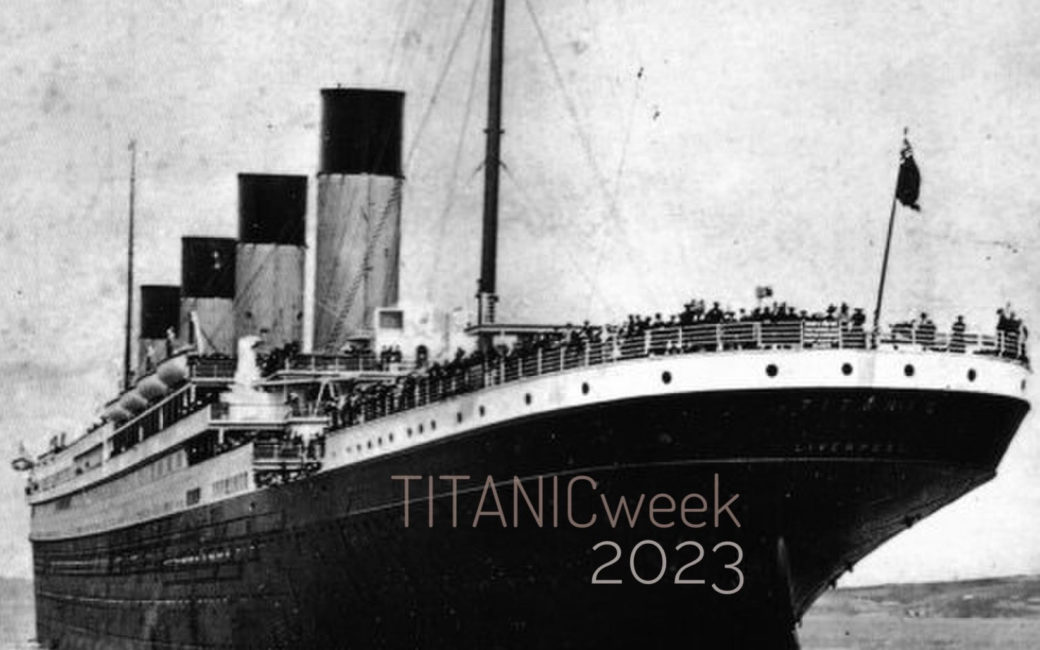"On a Trip Around the World": Henry Sutehall, Jr. & Howard Irwin
Henry Sutehall Jr. had been away from home for over two years when he boarded Titanic in Southampton on April 10, 1912.
Harry, as he was called, had been born in England in 1886. He emigrated to the United States with his parents and two younger siblings in 1895. They departed from the docks at Southampton, thereafter settling in Buffalo, New York.
His father worked with plaster in construction; his mother managed the family’s corner store on Delaware Avenue, selling tobacco products, confections, and ice cream.
And when Harry came of age, he took to work as a “trimmer,” working with upholstery in fancy carriages and automobiles.
Harry worked at E. E. Denniston’s in Buffalo. And that was where he met his new best friend: a young Canadian man named Howard Irwin.

The Soldiers & Sailors Monument in Buffalo, NY, circa 1912.
The young men were dissimilar: Harry was unassuming, even-tempered, and genteel, with nary a vice. Howard, on the other hand, was arrogant, adventurous, and irascible. By his own admission, he got into fights.
But they forged a devoted friendship, and soon, Harry Sutehall and Howard Irwin decided to embark on a round-the-world tour.
And so, on New Year’s Day of 1910, Harry and Howard set out on their adventures. Harry brought along his violin, and during their cross-country travels, Howard picked up the clarinet. Harry presumably guided his friend in nurturing his musical skills.
The boys worked their way across the United States; or, as Howard wrote in his journal, “stopping in all the principalities between Buff [Buffalo] and Frisco [San Francisco].”
They financed their travel by working as trimmers whenever they could offer their services. But they took other jobs as well—at one point, they worked as peach-pickers in California.
And then, sometime in the summer of 1911, Harry and Howard headed to Australia.

The ferry Kurraba at Mosman Wharf, Sydney, Australia, circa 1910. Courtesy of the museum of Applied Arts & Sciences.
They arrived in Sydney.
The boys seemed to fare well in Australia. Harry reportedly won a sweepstake of some kind while they were there, which contributed itself toward their travels.
While there, Harry fell in love. The girl's identity has not been discovered to date, but Harry made his intentions clear in the letters he wrote home: he would, one day soon, return to Australia to marry her.
Somewhere along the way, Howard Irwin had also fallen in love--although the relationship appeared to have been deteriorating. Pearl Shuttle had been touring the United States in her own right, as she was either a vaudeville performer or playing cornet a band.
Their love was epistolary, and Howard expressed in his letters to Pearl that because she was so beautiful, that he feared she would fall in love with another man. Over and over again, Pearl attempted to reassure Howard.
“You asked me if the love I had was dying,” Pearl wrote. “I say not.”
After many exchanges sent between Australia and the United States and back again, Pearl sent a seven-page letter to Howard in which she suggested they break up.
The boys parted ways after their stint in Sydney, only because they had diverging interests and they had plenty they each still wanted to see. But they vowed to meet up again along their westward wanderings toward home.
Howard and Harry made good on their word and reunited in Durban, South Africa, where they won a talent contest, perhaps thanks to their musical aptitudes. Then Howard and Harry once again split off, promising to meet again in England in 1912 to head back home on the maiden voyage of Titanic.
After separating from Howard, Harry went on to Europe.
While there, he is reported to have had an audition with American composer John Phillip Sousa. "The March King," as Sousa was widely known, had great esteem for Harry's talent but alas, he had no need for a violinist. So he advised the young man as to potential avenues he might take, to further his musical ambitions.
Eventually, Harry made it to England ahead of schedule. He stayed with family and enjoyed the reunion; they had not seen each other in five years, since 1907.

John Phillip Sousa circa 1900. Courtesy of the Library of Congress.
Harry Sutehall boarded Titanic as a Third-Class passenger at Southampton on April 10, 1912. He was unexpectedly alone.
For reasons still unconfirmed, Howard Irwin didn't show up.
By some accounts, Howard had left Europe two months early, because Pearl was deathly ill, and he had rushed to be with her. By Howard's own account, he had been shanghaied: the night before, he had gone out drinking with some random fellows and when he woke up, he was on an eastbound steamer vessel, heading to the Orient.
Not many people believed him.
Regardless of Howard's absence, Harry curiously boarded Titanic in possession of Howard's trunk. Maybe it was a mistake; maybe, it was a favor for his friend who had left it behind.
Harry Sutehall Jr. did not survive the sinking. He was 25 years old.
Howard Irwin claimed he was in Port Said, Egypt, when he heard that Titanic had foundered. He returned home thereafter, without his belongings and without his best friend.
In 1993, a submersible recovered Howard Irwin's luggage from the wreck site of Titanic. Inside, were his clarinet and shoes, a leather satchel filled with letters from Ms. Pearl Shuttle, and his travel diary from 1910.
The first entry reads:
With luck this trip will take us two years and with bad luck (WELL) we are going anyway.
share
